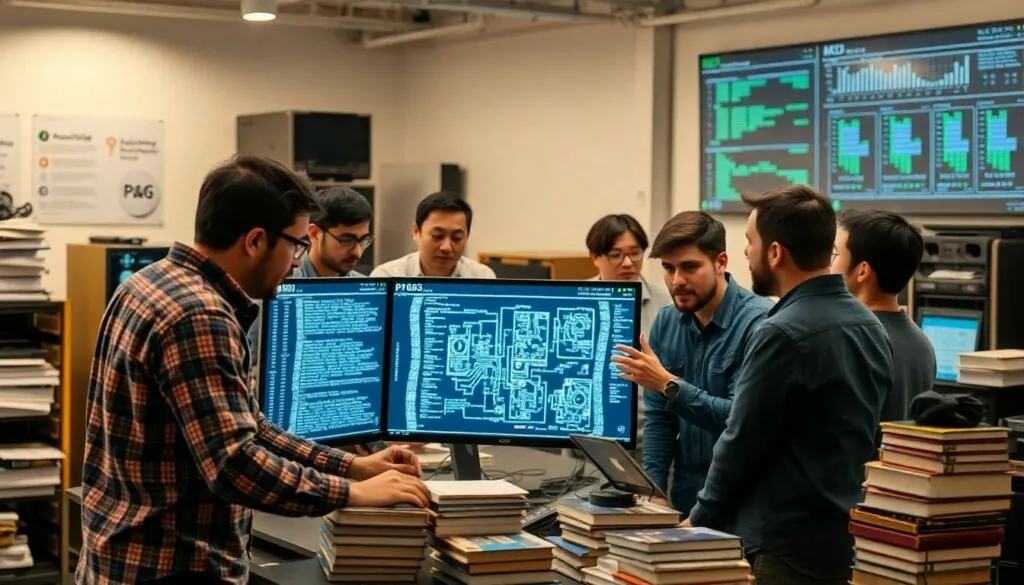Training a model like ChatGPT-4 isn’t just a walk in the park—it’s more like running a marathon while juggling flaming torches. With countless hours poured into data processing and fine-tuning, the journey to create this AI marvel is nothing short of impressive. So, how long did it really take?
In a world where instant gratification reigns supreme, the timeline for training ChatGPT-4 might surprise you. While many might expect a quick fix, the reality involves a complex blend of cutting-edge technology and meticulous craftsmanship. Buckle up as we dive into the fascinating timeline behind this AI powerhouse, revealing just how much effort goes into making it smarter, faster, and ready to tackle your questions.
Table of Contents
ToggleOverview of ChatGPT 4
ChatGPT-4 represents a significant advancement in artificial intelligence. This model builds on the capabilities of its predecessors, utilizing advanced algorithms and enormous datasets. The training process demands vast computational resources, which contributes to the model’s high performance.
Developers employed diverse data sources during training, including books, articles, and websites. These varied sources allow the model to understand and generate text across numerous topics. Each dataset undergoes careful preprocessing to ensure quality, relevance, and diversity.
Achieving human-like understanding and generation of text involved intricate training techniques. The training spans several months and focuses on refining the model’s ability to predict text sequences. Attention mechanisms are vital, allowing the model to focus on relevant parts of the input data as it learns.
During the training phase, adjustments occur frequently to optimize performance. Developers continually monitor outputs for accuracy and coherence. These updates enhance the model’s ability to respond to complex queries effectively.
Moving from initial training to fine-tuning provides further improvements. Fine-tuning tailors the model to specific applications, balancing general knowledge with specialized tasks. This iterative process refines its responses.
Extensive testing follows, ensuring reliability and robustness in various scenarios. Rigorous evaluations assess its ability to maintain context and generate appropriate responses. The commitment to quality assurance highlights the ongoing dedication to developing ChatGPT-4.
Overall, the timeline for training ChatGPT-4 encompasses months of effort and refinement, underscoring the model’s sophistication and capability in understanding human language.
Factors Influencing Training Time

Several key factors significantly influence the training duration of ChatGPT-4. Understanding these aspects clarifies the intricate nature of the training process.
Data Collection Process
Data collection impacts the training time substantially. Developers gather vast datasets from various sources, such as books, articles, and websites. Quality matters in this phase, as high-quality data ensures the model learns effectively. Preprocessing steps enhance data relevance and accuracy, making the training process smoother. Balancing quantity with quality poses challenges, often extending the timeline. Furthermore, developers continuously validate their datasets to eliminate biases or inaccuracies, which requires additional time and effort.
Model Architecture
The model architecture plays a critical role in determining the training period. ChatGPT-4 features complex algorithms designed to enhance its understanding and generation of text. These algorithms involve multiple layers of attention mechanisms, allowing the model to focus on relevant information during training. The intricacies of this architecture necessitate extensive computational resources, which can prolong the training process. Developers frequently adjust architecture parameters based on performance evaluations, further impacting timelines. Each modification is vital for optimizing the model’s ability to deliver coherent responses in various contexts.
Training Duration Estimates
The training duration of ChatGPT-4 involves intricate processes and significant resources. Months of dedicated effort contribute to shaping the model’s sophisticated capabilities.
Comparing with Previous Versions
Comparisons reveal that ChatGPT-4 took considerably longer to train than its predecessors. Previous versions typically required a few months for training. The increased complexity in ChatGPT-4’s architecture resulted in an extended timeline due to layered attention mechanisms and heightened data requirements. Additional time went into refining text prediction abilities and ensuring reliability. The refinement of training techniques contributed to elevating performance standards significantly.
Impact of Hardware Resources
Hardware resources greatly influence training duration. Powerful GPUs and TPUs facilitate quicker processing, accelerating the training of complex models like ChatGPT-4. The model’s expansive dataset demands tremendous computational power. More extensive and faster hardware shortens training times, allowing for frequent adjustments and iterative testing. Industry-standard tools and architecture enhancements maximize performance efficiency, further impacting the duration. Combining these hardware capabilities contributes directly to achieving the desired performance more rapidly.
Training Methodology
The training methodology for ChatGPT-4 involves advanced learning techniques requiring extensive resources. A combination of supervised and reinforcement learning methods facilitates the model’s ability to generate coherent and context-aware responses.
Supervised Learning
Supervised learning forms the backbone of initial training for ChatGPT-4. Developers provide labeled datasets that help the model learn to associate inputs with appropriate outputs. This phase helps ensure a strong foundation, as the model learns how to predict the next word in a sentence effectively. Data quality is paramount; developers utilize diverse and extensive text sources to create a rich learning environment. Ensuring relevance and accuracy in this phase enhances the model’s grasp on language nuances. Developers repeatedly refine the model’s responses based on feedback, fostering improved accuracy and coherence.
Reinforcement Learning
Reinforcement learning further refines ChatGPT-4’s capabilities. This method involves exposing the model to various scenarios where it learns from responses based on user interactions. Reward signals guide the model towards preferable outcomes, enhancing decision-making in conversation contexts. Developers assess the effectiveness of different strategies through repeated trials, encouraging the model to optimize its performance. Implementing this technique allows ChatGPT-4 to generate more human-like and contextually appropriate interactions. Performance evaluations during this stage ensure that responses remain relevant to user queries.
The training of ChatGPT-4 exemplifies the dedication and expertise required to develop cutting-edge AI technology. With its intricate architecture and extensive data requirements the process took significantly longer than previous models. This extended timeline reflects the commitment to quality and performance that developers prioritized throughout training.
As AI continues to evolve the lessons learned from ChatGPT-4’s development will undoubtedly influence future models. The emphasis on refining training techniques and utilizing advanced resources not only enhances capabilities but also sets new benchmarks for what AI can achieve. The journey of ChatGPT-4 underscores the importance of patience and thoroughness in creating intelligent systems that understand and respond to human language effectively.





